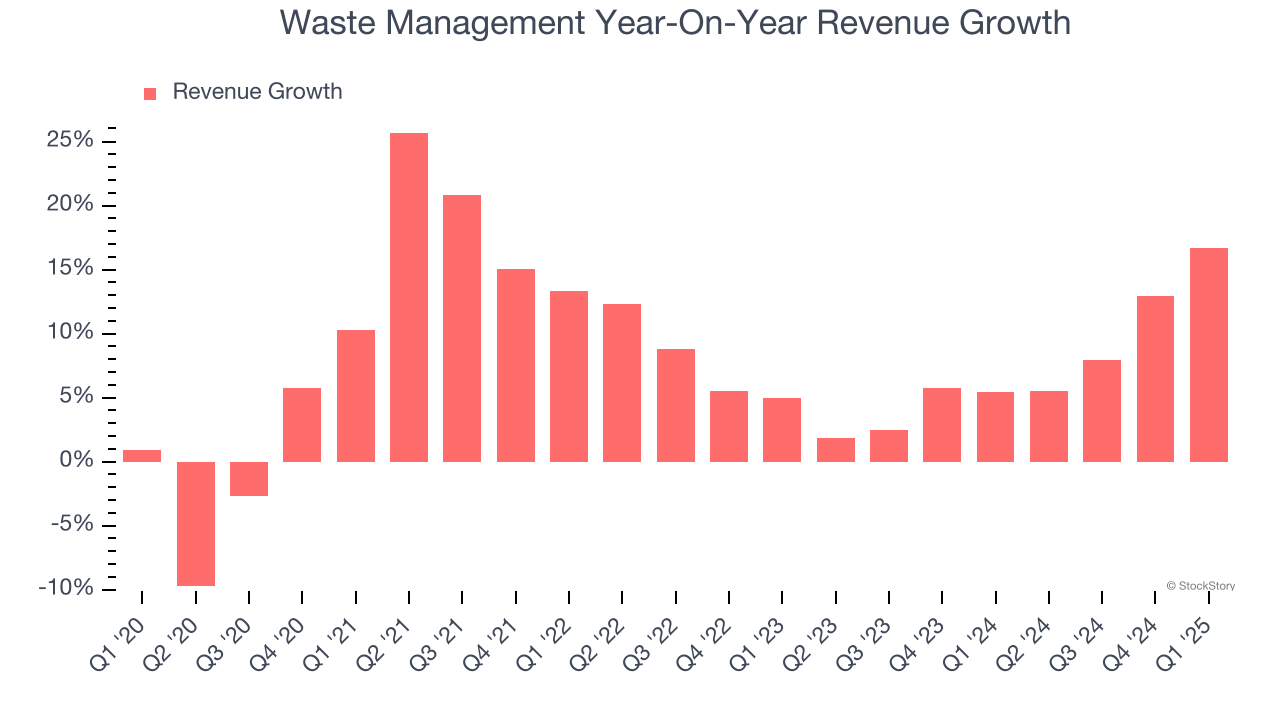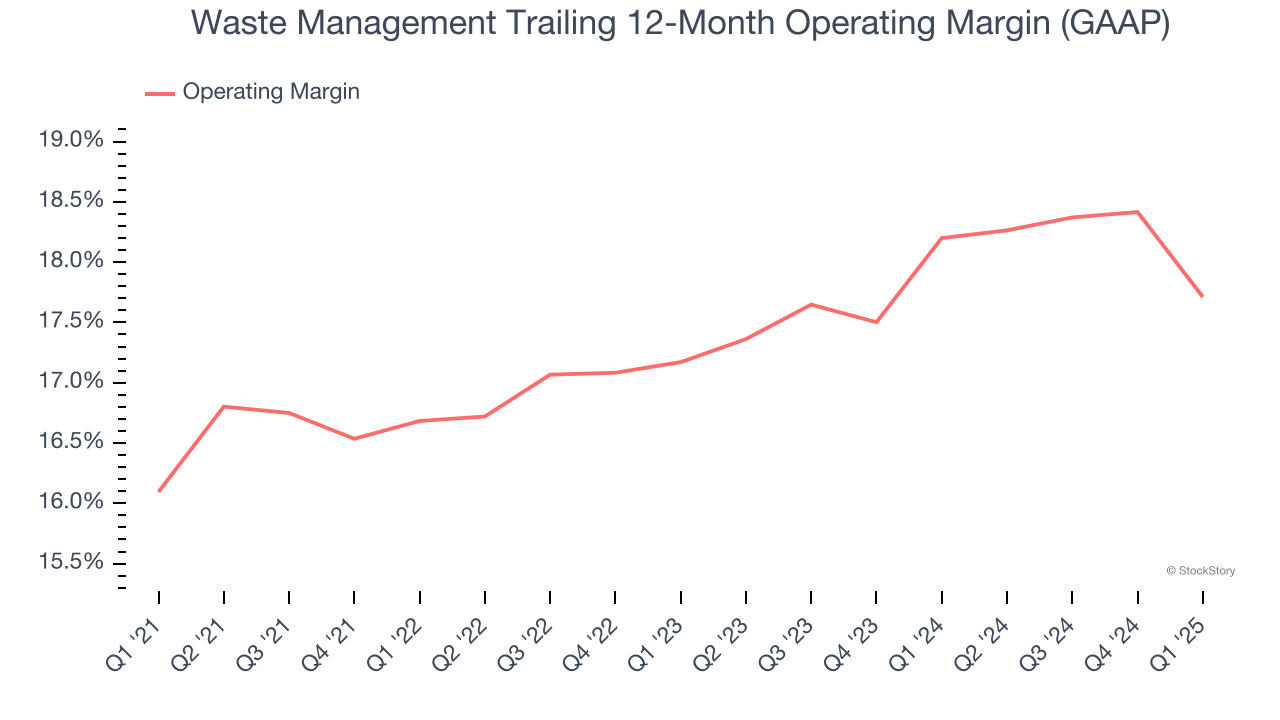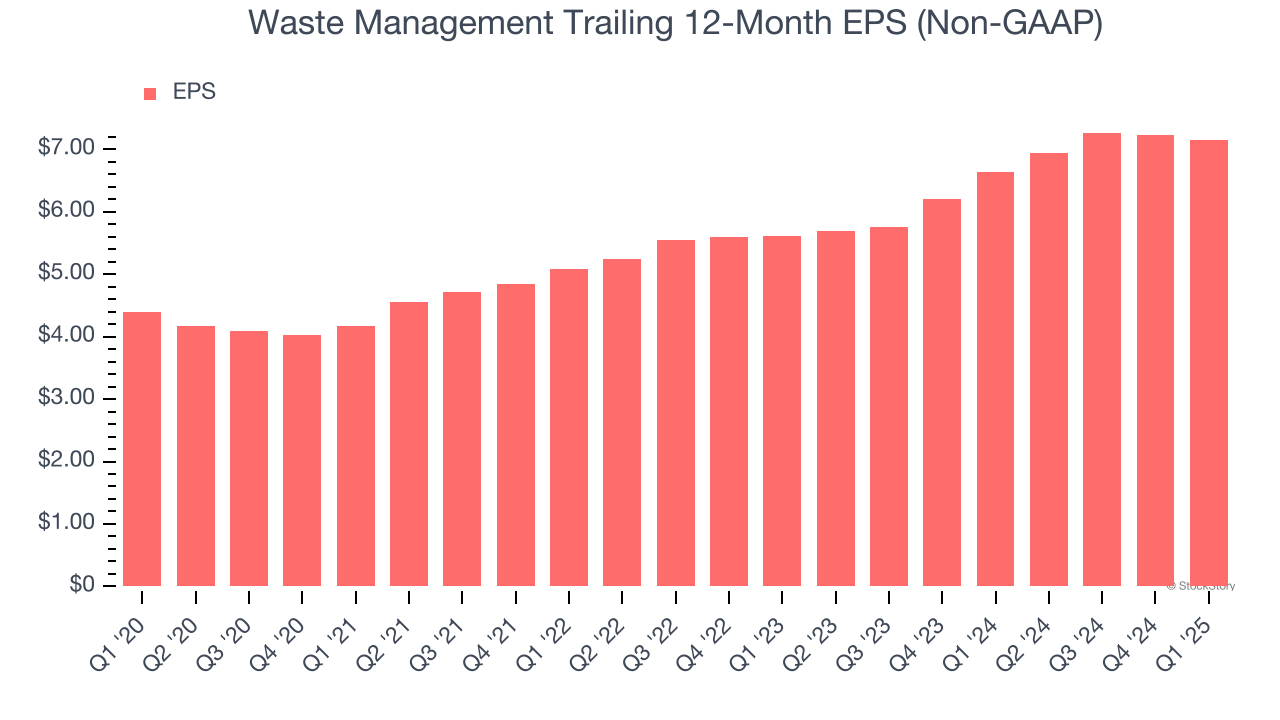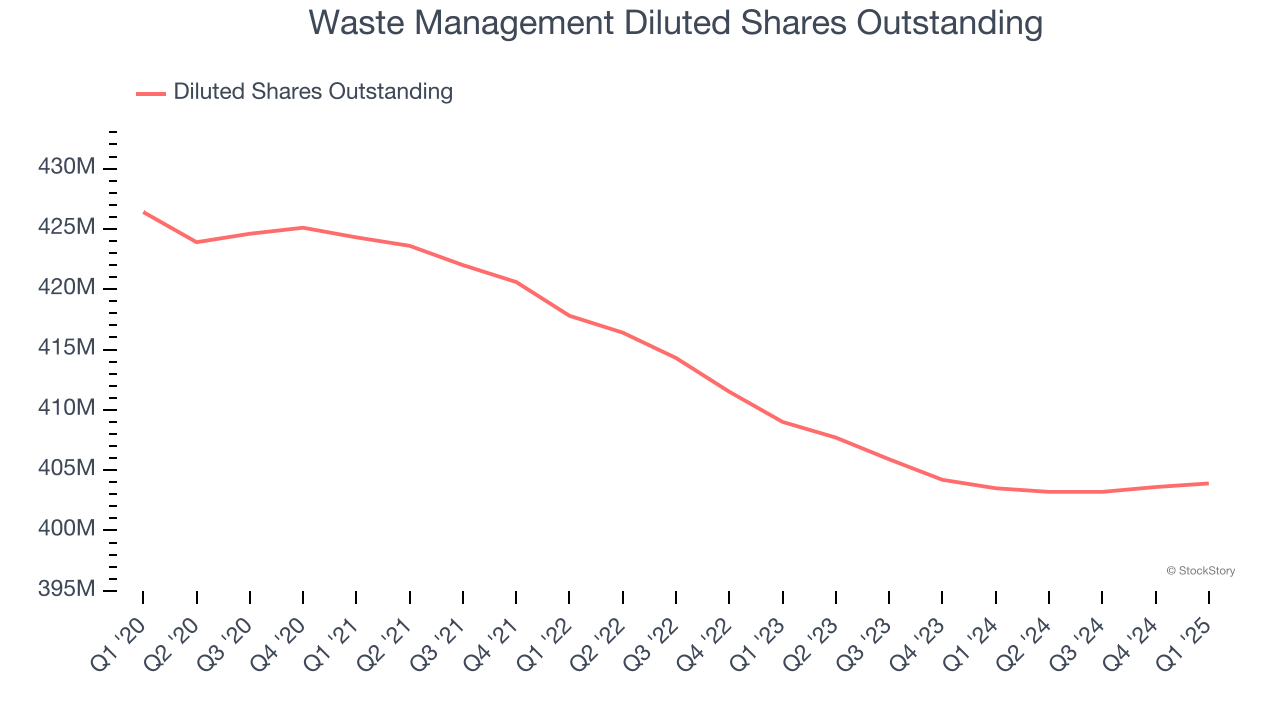
Waste management services provider Waste Management (NYSE:WM) fell short of the market’s revenue expectations in Q1 CY2025, but sales rose 16.7% year on year to $6.02 billion. Its non-GAAP profit of $1.67 per share was 5.2% above analysts’ consensus estimates.
Is now the time to buy Waste Management? Find out by accessing our full research report, it’s free.
Waste Management (WM) Q1 CY2025 Highlights:
- Revenue: $6.02 billion vs analyst estimates of $6.11 billion (16.7% year-on-year growth, 1.4% miss)
- Adjusted EPS: $1.67 vs analyst estimates of $1.59 (5.2% beat)
- Adjusted EBITDA: $1.72 billion vs analyst estimates of $1.71 billion (28.5% margin, in line)
- Operating Margin: 16.8%, down from 19.7% in the same quarter last year
- Free Cash Flow Margin: 6.3%, down from 13.8% in the same quarter last year
- Market Capitalization: $91.86 billion
“Our first quarter results reflect the strong track record of the WM team as we started the year delivering on each of our strategic priorities,” said Jim Fish, WM’s President and CEO.
Company Overview
Headquartered in Houston, Waste Management (NYSE:WM) is a provider of comprehensive waste management services in North America.
Waste Management
Waste management companies can possess licenses permitting them to handle hazardous materials. Furthermore, many services are performed through contracts and statutorily mandated, non-discretionary, or recurring, leading to more predictable revenue streams. However, regulation can be a headwind, rendering existing services obsolete or forcing companies to invest precious capital to comply with new, more environmentally-friendly rules. Lastly, waste management companies are at the whim of economic cycles. Interest rates, for example, can greatly impact industrial production or commercial projects that create waste and byproducts.
Sales Growth
Reviewing a company’s long-term sales performance reveals insights into its quality. Even a bad business can shine for one or two quarters, but a top-tier one grows for years. Luckily, Waste Management’s sales grew at a decent 8.2% compounded annual growth rate over the last five years. Its growth was slightly above the average industrials company and shows its offerings resonate with customers.

Long-term growth is the most important, but within industrials, a half-decade historical view may miss new industry trends or demand cycles. Waste Management’s annualized revenue growth of 7.2% over the last two years aligns with its five-year trend, suggesting its demand was consistently weak. 
This quarter, Waste Management’s revenue grew by 16.7% year on year to $6.02 billion but fell short of Wall Street’s estimates.
Looking ahead, sell-side analysts expect revenue to grow 13.1% over the next 12 months, an improvement versus the last two years. This projection is particularly healthy for a company of its scale and indicates its newer products and services will fuel better top-line performance.
Software is eating the world and there is virtually no industry left that has been untouched by it. That drives increasing demand for tools helping software developers do their jobs, whether it be monitoring critical cloud infrastructure, integrating audio and video functionality, or ensuring smooth content streaming. Click here to access a free report on our 3 favorite stocks to play this generational megatrend.
Operating Margin
Waste Management has been a well-oiled machine over the last five years. It demonstrated elite profitability for an industrials business, boasting an average operating margin of 17.3%. This result isn’t surprising as its high gross margin gives it a favorable starting point.
Analyzing the trend in its profitability, Waste Management’s operating margin rose by 1.6 percentage points over the last five years, as its sales growth gave it operating leverage.

In Q1, Waste Management generated an operating profit margin of 16.8%, down 2.9 percentage points year on year. Since Waste Management’s operating margin decreased more than its gross margin, we can assume it was less efficient because expenses such as marketing, R&D, and administrative overhead increased.
Earnings Per Share
We track the long-term change in earnings per share (EPS) for the same reason as long-term revenue growth. Compared to revenue, however, EPS highlights whether a company’s growth is profitable.
Waste Management’s EPS grew at a solid 10.3% compounded annual growth rate over the last five years, higher than its 8.2% annualized revenue growth. This tells us the company became more profitable on a per-share basis as it expanded.

Diving into Waste Management’s quality of earnings can give us a better understanding of its performance. As we mentioned earlier, Waste Management’s operating margin declined this quarter but expanded by 1.6 percentage points over the last five years. Its share count also shrank by 5.3%, and these factors together are positive signs for shareholders because improving profitability and share buybacks turbocharge EPS growth relative to revenue growth. 
Like with revenue, we analyze EPS over a shorter period to see if we are missing a change in the business.
For Waste Management, its two-year annual EPS growth of 12.9% was higher than its five-year trend. We love it when earnings growth accelerates, especially when it accelerates off an already high base.
In Q1, Waste Management reported EPS at $1.67, down from $1.75 in the same quarter last year. Despite falling year on year, this print beat analysts’ estimates by 5.2%. Over the next 12 months, Wall Street expects Waste Management’s full-year EPS of $7.15 to grow 8.1%.
Key Takeaways from Waste Management’s Q1 Results
It was encouraging to see Waste Management beat analysts’ EPS expectations this quarter. On the other hand, its revenue slightly missed. Overall, this quarter could have been better. The stock remained flat at $227.40 immediately after reporting.
Waste Management underperformed this quarter, but does that create an opportunity to invest right now? What happened in the latest quarter matters, but not as much as longer-term business quality and valuation, when deciding whether to invest in this stock. We cover that in our actionable full research report which you can read here, it’s free.
